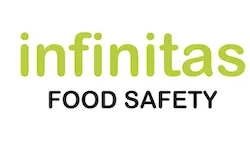Introduction
Food hygiene inspections are changing. Do you know what to expect and how this could impact your business? Hygiene inspections are undertaken by EHO (Environmental Health Officers). When deciding on the frequency of inspections the EHO must take account of the Food Law Code of Practice (also know as the Code). The Food Standards Agency recently revised the Code for England & Northern Ireland. Steps are currently underway to revise the Food Law Code for Wales .
This article considers how often food hygiene inspections are currently undertaken. It also considers the impact the revised Food Law Code of Practice will have on food hygiene inspection frequencies for UK food businesses.
Purpose of a Food Hygiene Inspection
Food hygiene inspections are carried out to ensure that food businesses are complying with food hygiene legislation so that food is safe to eat. The inspector will assess how well your business is implementing controls to prevent harm to customers. This includes harm from food poisoning, foodborne illness, foreign bodies in food and food allergens.
Who Carries Out Food Hygiene Inspections?
In accordance with the Food Law Code of Practice all food premises within a local authority geographical area are subject to routine food hygiene inspections by Food Safety Officers.
A Food Safety Officer is also known as an EHO. The term EHO means Environmental Health Officer. These professionals have a degree in Environmental Health and/or a post graduate qualification.
Environmental Health is a branch of public health that focuses on external factors in the environment that can impact health, safety and wellbeing. EHOs tend to work within a local authority. Some are generalists, whilst others specialise.
Role of The EHO In A Food Hygiene Inspection
An EHO will carry out planned inspections and audits of food businesses. They also investigate complaints. Typically, visits will be unannounced. As a result of a food hygiene inspection, the EHO will provide a food business with a Food Hygiene Rating, unless an exemption applies to that business.
EHOs play an important role by identifying, monitoring and minimising the factors that determine health within an environment. In doing so, they make places safer and healthier for people by preventing harm, ill health and disease.
What To Expect During A Food Hygiene Inspection?
If you are a new business owner, watch the video below to gain insight into what to expect during a food hygiene inspection.
What Happens After The Inspection?
A few days after the inspection, the business owner will be sent a letter confirming the food hygiene rating that has been awarded. The letter will outline any improvements that need to be made and the date the work must be completed by. A food hygiene rating sticker will be enclosed with the letter. In more serious cases, enforcement action may be taken, and this will be outlined in the letter.
Enforcement Action
EHOs are given enforcement powers to protect the public. This means that following an inspection they can:
- Send a letter outlining any compliance issues identified and ask that these be corrected.
- Seize foods suspected of being unfit for human consumption.
- Serve a legal notice that sets out certain things that must be done.
- Recommend a prosecution in serious cases.
Businesses will be given adequate time to make the required changes, unless there is an immediate risk to public health.
How To Appeal
If the business owner does not agree with the Food Hygiene Rating or enforcement action, as stated in the letter from the EHO, an appeal can be made. The letter or notice will explain how to appeal a decision by the inspector.
To find out how to appeal click here The appeal procedure is an important safeguard to protect your business against unfairness or a rating that feels wrong. Read our article about the appeals process – there is a problem with it. Find out more here.
Displaying The Food Hygiene Rating Sticker
The business owner has 21 days from the date the notification is received to display the food hygiene rating sticker in a prominent place. This could be the front door of the premises, or on a window adjacent to the front door. Currently only food businesses in Wales and Northern Ireland are required by law to display their sticker. It is currently voluntary for food businesses in England to display their food hygiene rating sticker.
Consequences For Failing To Display The Sticker
There are consequences in Wales if a business fails to display its food hygiene rating sticker in a prominent place.
In England, businesses are encouraged to display their sticker. But as this is voluntary, there are no consequences for failing to display the sticker.
If a food business owner in Wales failed to display their food hygiene rating sticker they may need to pay a fixed penalty notice. Or face prosecution.
Appealing A Food Hygiene Rating or Enforcement Action
If a business owner does not agree with the food hygiene rating or enforcement action, as stated in the letter from the EHO, an appeal can be made. The letter or notice will explain how to appeal a decision.
The Revised Food Law Code of Practice
decidingEHOs must take account of the Food Law Code of Practice when deciding whether a food business is complying with food law. The Food Law Code sets the approach used to determine the frequency of food hygiene inspections.
The Food Standards Agency (FSA) recently revised The Food Law Code of Practice that applies to England and Northern Ireland. Work will start soon to evaluate how the Code will need to be revised for Wales.
The updated code provides a new approach to how EHOs will deal with food hygiene inspections. How often a business will be inspected is going to depend on their Inherent Risk Profile and a Compliance Assessment (the latter takes into account performance and track record). The Compliance Assessment has a whole section that takes allergen management into account. The two final scores are then plotted on to a decision matrix to determine the minimum frequency at which future inspections must be carried out.
This new approach means that non-compliant food businesses will be inspected more frequently. Food businesses with a poor compliance rating will also receive more frequent follow up inspections. In comparison, compliant food businesses will receive less frequent inspections. Surveys and questionnaires may be used instead to assess the performance of compliant food businesses.
This will free up local authority resources. Rather than visiting all food businesses, local authority EHOs will target food hygiene visits towards premises with a poor history of compliance and under-performing businesses.
This is a big change to the way in which EHOs will carry out their food hygiene inspections.
It is good news for responsible food businesses that maintain a good or excellent compliance rating. Those businesses may only receive a food hygiene inspection once every 5 years.deci
When Will The New Changes Take Place?
The new Food Law Code of Practice will not be implemented until a transition period has taken place. In England, this will start in the summer of 2023. During this period EHO’s will receive training in the new regime.
What Action Should You Take Now?
Food business owners need to familiarise themselves with the new Food Law Code of Practice. It provides important insight into how a food hygiene rating is applied and how the frequency of food hygiene inspections will be determined.
In particular, food businesses need to understand the requirements that will be used to form their Compliance Assessment score. A whole section of the Compliance Assessment is dedicated to the management of food allergens, indicating the importance of this topic.
Food Safety as a Competitive Advantage: How to Stand Out and Win Trust in 2026
Food safety isn’t just compliance—it’s your secret weapon to stand out, win trust, and attract more customers. See how to make food safety your true advantage in 2026.
How to Use Your Hygiene Rating as a Restaurant Marketing Tactic
Some restaurants hide their food hygiene rating. Savvy business owners use them as a marketing tool. Shouting about your rating builds trust, attracts customers, and gives you an edge over the competition.
Food Hygiene Rating Crisis? What To Do When Your Hair’s On Fire
A failed food hygiene rating hits hard. Discover the real reasons behind the shock, what smart operators do differently, and how to future-proof your business before the next crisis strikes.


